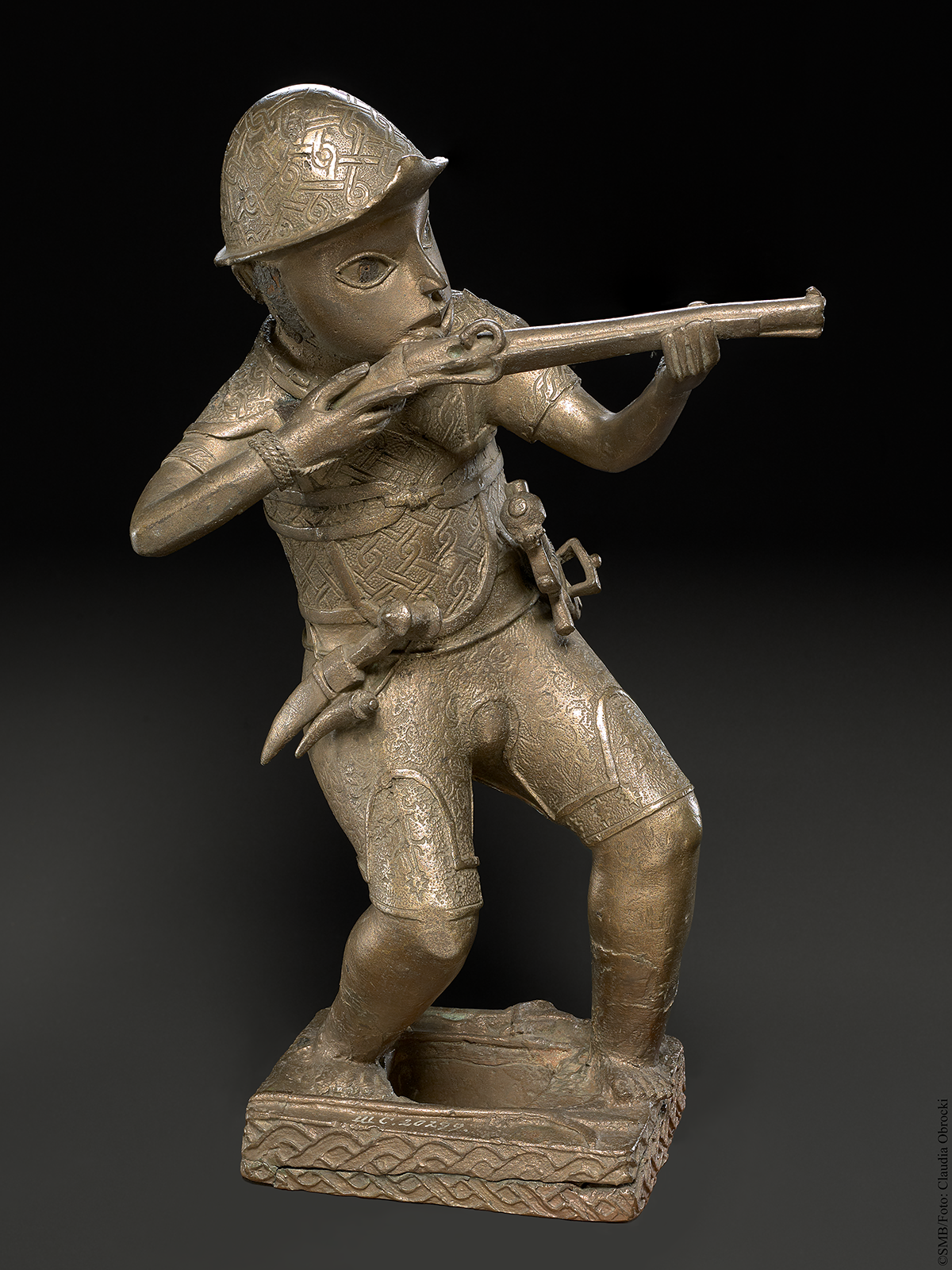Benin Bronzes
Here you see replicas and moulds of the ‘Benin Bronzes’, religious and royal sculptures from the kingdom of Benin, in what is now Nigeria. These plaster casts were made in the first half of the 20th century and have been painted to look as much as the original statues as possible. Around 5,000 original objects stolen from Benin are on display in 131 institutions around the world. Only a small number can be found in their country of origin.
The renowned Benin Bronzes symbolise the colonial injustice associated with the western craze for collecting. Most of the Benin collections in non-African countries can be traced back to looting in a single year: 1897. At that time, the British occupiers were guilty of mass murder, destruction and plundering in the kingdom of Benin.
These appalling acts can be viewed as a consequence of the 1884 Berlin Conference, which divided the African continent among several European countries. Benin, in Nigeria, became British territory. An attempt by the new rulers to secure their trading position with Oba Ovonramwen, ruler of Benin, ended in armed conflict.
London responded with the infamous ‘punitive expedition’ that left the army of Benin defeated. The palace of the ruler was burned down. In it, British soldiers ‘found’ thousands of cultural objects of high artistic value that they took and sold. The items ended up in museums and private collections in Europe and North America. The Ethnologisches Museum of Berlin also profited from this infamous conflict. Von Luschan – curator at the time – acquired a huge collection.
Discussions about the future of these objects have been ongoing between European museums and Nigerian parties since 2010. The Benin Dialogue Group laid the foundations for inter-governmental negotiations on restitution. In 2022, the Ethnologisches Museum in Berlin transferred ownership of 514 original Benin Bronzes to Nigeria. Until then, the museum had held one of the largest collections of Benin art in the world.
The return of the pieces also signalled the end of the production and sale of replicas. This raised new questions: who decides whether it is allowed to make replicas of original Bronzes? Should restitution of the objects mean handing over the rights of reproduction as well? Should museums still display original or replica Benin Bronzes in the future, and if so, how? So begins an ongoing conversation with many angles and possible outcomes.

Trade and production
Located in the Niger Delta area, the Kingdom of Benin was a major regional power in West Africa for more than 500 years. Today, the former kingdom’s territory lies in Nigeria (not in the neighbouring country of Benin). Close trade relations between the Kingdom of Benin and Europe existed as early as the 15th century, bringing materials to the area that were used to produce sculptures, such as brass. Contact with Europe is also evident in the subjects chosen by Benin artists at this time, as a number of sculptures depict Portuguese merchants and soldiers.

Historical and artistic value
When the looted Benin Bronzes arrived in Europe in the late 19th century, their origins were initially unknown. At the time, African art was still considered primitive, but after the German curator Felix von Luschan labelled the objects as art, international demand exploded. Buyers were drawn to the objects mainly for their aesthetics and artistic craftsmanship – their original spiritual and historical significance was of little interest to them. In the royal palace of Benin, the sculptures of historical figures and events for many centuries served as visual representations of the kingdom’s history. They were also used for ancestor worship.
Sculptures return home
With the establishment of the Benin Dialogue Group in 2010, the first steps were taken towards cooperation and the return of the Benin Bronzes. In July 2022, Germany and Nigeria reached an agreement on the repatriation of the sculptures. Ownership of the 514 objects from the Ethnological Museum of Berlin’s collection was transferred to Nigeria. The 168 loans left in Berlin will be used to reflect on their history as looted artefacts and the return process, and on their significance as part of Nigeria’s cultural heritage. Besides the return of the sculptures, work is also underway to train Nigerian curators, strengthen the country’s cultural infrastructure and promote its contemporary art scene.

Replicas
Shortly after the Benin Bronzes arrived in Germany, the Gipsformerei – a Berlin institution that has produced plaster casts of famous works of art since 1819 – started making replicas. Since the original Bronzes were returned in 2022, production has ceased. However, due to their significance in relation to colonial issues, the historical replicas continue to be used for research purposes. The replicas of two royal thrones, for instance, played a role in an early restitution case. When the King of Benin requested the return of the original sculptures in 1935, Germany replied that he could have them reproduced at his own expense.

